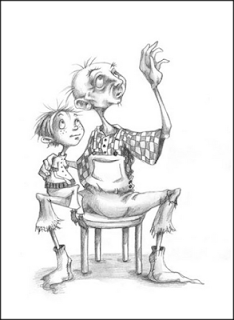This is a wall painting from the 3rd century BC tomb of Si-Amun at Gebel al-Mawta in the Siwa Oasis in Egypt...It depicts seated Si-Amun, and his son, standing before him and touching his father's knee...
Now have a look at this: "Seal depicting...Queen Uqnitum & King Tupkish of the Hurrian kingdom of Urkesh (late 3rd millennium BC) with...the young prince touching his father's knee".
I talked about this in my post "Queen Uqnitum"
What's with touching the knee? Remember the article about the Serbian expression "From knee to knee" meaning "From generation to generation", "From father to son".
In it I talked about the fact that the word for generation and the word for knee have the same root in many languages. Why?
Because of this: The English etymological dictionary says something interesting about the etymology of the word genus: "...could come from Latin genu (knee) from a supposed ancient custom of a father acknowledging paternity of a newborn by placing it on his knee..."
How widespread was this ancient custom?



Is this related to all that Old Testament stuff where sons take oaths by placing a hand under Dad's "thigh"? Or was that actually a reference to testicles (as I have read elsewhere, but not sure how legit the source is)?
ReplyDelete